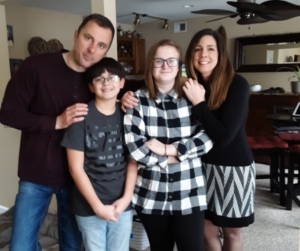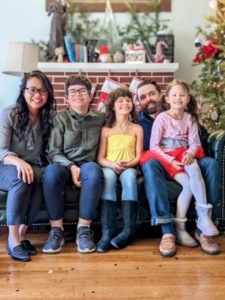Adoption Done Right
By Br. Terry Taffe ofm Cap. & Ian Keldoulis
Adoption, done properly, yields miracles. Adoption, done improperly, frequently leads to disappointment for potential parents and ongoing misery for children in foster care. So, what’s the surest path to take? Downey Side’s fifty-plus years of experience creating forever families makes us uniquely qualified to illuminate the journey. Just beware, there are no shortcuts.
It’s best to know in advance, once potential parents make the life-altering decision to adopt, it typically takes between 18 and 24 months to fully realize their dream. The major steps along the road are:
- Inquiry
- Screening & home study
- Searching & matching
- Transfer
- “Supervision”
- Finalization
The following is an introduction to these stages. Future blog posts will dig deeper into each phase.
The journey is more akin to a maze full of baffling bureaucratic twists and turns than a linear path but rest assured thousands of families get through it each year. And one of the key things Downey Side does is encourage successful families to share their experiences with newcomers.
Inquiry
This is really just an eye-opening moment. For people with little awareness of the world of child welfare, it’s time to understand what you’re in for. After potential parents make an initial inquiry, there’s a window of about two months to take in the adoption landscape and decide once and for all you’re going to do it. Meeting and talking with adoptive families is vital. It’s equally important to be comfortable you’re equipped with all the tools needed to make a good decision. Remember, being a forever family, is well, forever. And the more parents know, the more power they have. This is an appropriate time to bring up ‘issues’ in your own past that you’re embarrassed about or you think might prevent you from being approved. At the end of the day, parents not social workers raise adopted children.
Screening & Home Study
Downey Side trusts the families that come to us. We’re not trying to predict the future, we’re just helping prepare for it. We definitely aren’t interested in perfection, we “screen in” not “screen out”. We’re focused on the family’s commitment to the children as they are, not as we want them to be. That is, we look at families from the child’s point of view, “do they have what children need?”, rather than focusing on the family’s issues such as fertility.
There’s a mountain of paperwork including fingerprinting and background checks that must be submitted to multiple levels of government. We write the reports, but mostly we’re handholding families to get through the ordeal instead of being judgmental.
The home study is an 8 to 10-page report Downey Side writes on the family. It’s what families need in order to be considered potentially permanent by state authorities. It’s a time when we look at families “warts and all” to paint a portrait. We talk about any “blemishes” that exist. In fact, this is really helpful, sometimes families’ past difficulties can bridge cultural gaps with children emerging from foster care, after all, they are likely to have had similar experiences. It’s extremely rare we uncover something during a home study that prevents a family from moving forward.
Search & matching
Much like dating in the twenty-first century, finding children begins online. The starting point is adoptUSkids.org, a national registry of children up for adoption. Also, like online dating, you can view pictures of kids and find out very rudimentary information about them. Typically, the fun stuff. And then… there are loads of glitches. Often listed children aren’t actually available—they may have been returned to their parents, for example. Only expect success after about 50-75 matching attempts. Stay calm and don’t get your hopes up too much. (Just like dating.)

The stakes are higher for the children than the family if the placement blows up (often referred to euphemistically as ‘it didn’t work out’.) Children lose home and family but the family stays put. As adults we’re capable of making a permanent commitment – children by definition are not. For these reasons we respectfully request that our families make a permanent commitment before they meet the children.
Downey Side helps potential parents understand the information that comes with a match. Much of it is medical, and overdiagnosis of mental health conditions is par for the course. Virtually all children in foster care are diagnosed with ADHD and attachment disorders. Some of this is true. And some only partially true, and some is downright false. Often in foster care, medicating children is the easiest way to manage them. Frequently, once kids are adopted we help parents ween their children off unnecessary prescription drugs or find that the drugs are no longer needed because the children’s general environment is no longer stressful.
Transfer
 Getting children from one state to another (the bulk of the adoptions Downey Side handles) is a logistical and legal challenge. In practice, this means we arrange approval by the receiving state while maintaining the responsibility of the initial state toward the children until finalization occurs. Most agencies don’t do this. Although Downey Side is contracted by the states and handles the details with legal authority, we make sure the family is fully in charge. We’re here to help, not run the show.
Getting children from one state to another (the bulk of the adoptions Downey Side handles) is a logistical and legal challenge. In practice, this means we arrange approval by the receiving state while maintaining the responsibility of the initial state toward the children until finalization occurs. Most agencies don’t do this. Although Downey Side is contracted by the states and handles the details with legal authority, we make sure the family is fully in charge. We’re here to help, not run the show.
‘Supervision’
Similarly, during the 6 to 9 months or so before finalization, Downey Side plays an emotionally and practically supportive role. The technical term, “supervision”, is really a misnomer. We’re focused on assisting parents to maintain their commitment through a period of radical upheaval in their household. It’s not about judging whether parents or their new children are doing things “correctly”.
Finalization
This is when parents receive full authority over their adopted children. Again, there’s a lot of paperwork to handle. So, we tackle the bulk of it and help parents stay on track with the really important stuff, creating a permanent home for their kids.

Throughout the entire process, Downey Side manages expectations and keeps things in perspective. It’s difficult for adoptive families to grasp a true understanding of the roles and relationships between themselves and the system. This lack of experience with bureaucracy masks the fact that the state is subordinate to the parents. It’s vital to keep at the forefront of everyone’s mind that the “best interests of the child” are only fulfilled when the family creates a lifelong relationship with the child.
We know our placements work because over and over again, we watch children grow into fully functioning adults.
